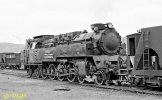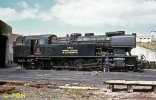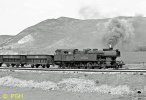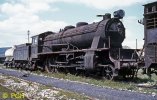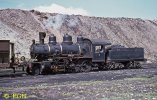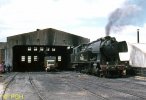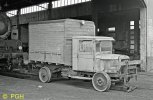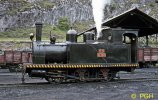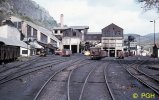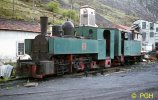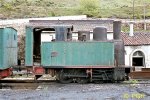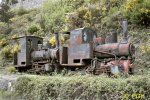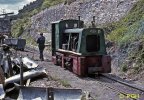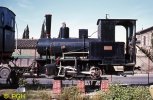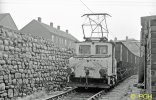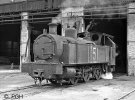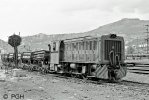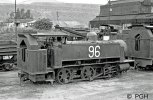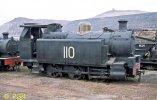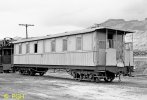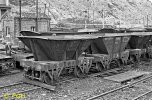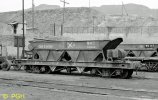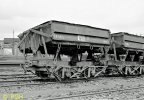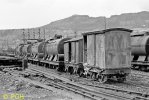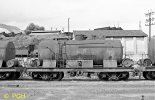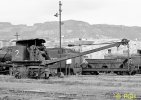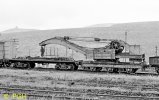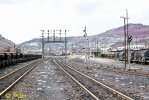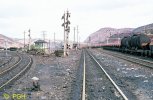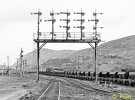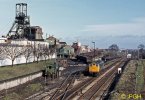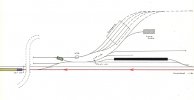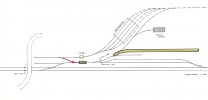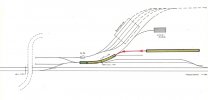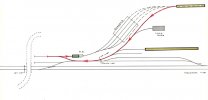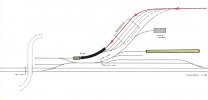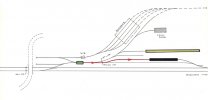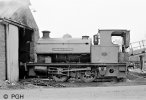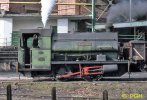Brakevan No.1 at NCB Littleton Colliery, Staffordshire, presumably ex BR. Like Granville the line from Littleton Colliery to the BR interchange at Penkridge was steeply graded in the direction of loaded trains and brakevans were normally used with the steam locomotives. The brakevans were not required after the introduction of diesel locomotives fitted with air brakes and the use of MGR hoppers.
Brakevan no. 3, an ex LMS one remained at Littleton when we visited in 1989 - used to take us down to the reception/exchange sidings (although we all had a cab ride in one direction or the other) The van was even "in steam Littleton Colliery, Cannock, Staffordshire in 1989 | NCB no. 3 MR-LMS brake van Littleton Coll. 89-03-29 P Bartlett [W]
Littleton Colliery, Cannock, Staffordshire in 1989 | NCB no. 3 MR-LMS brake van Littleton Coll. 89-03-29 P Bartlett [W]
Paul Bartlett York
Brakevan no. 3, an ex LMS one remained at Littleton when we visited in 1989 - used to take us down to the reception/exchange sidings (although we all had a cab ride in one direction or the other) The van was even "in steam
 Littleton Colliery, Cannock, Staffordshire in 1989 | NCB no. 3 MR-LMS brake van Littleton Coll. 89-03-29 P Bartlett [W]
Littleton Colliery, Cannock, Staffordshire in 1989 | NCB no. 3 MR-LMS brake van Littleton Coll. 89-03-29 P Bartlett [W]Paul Bartlett York



